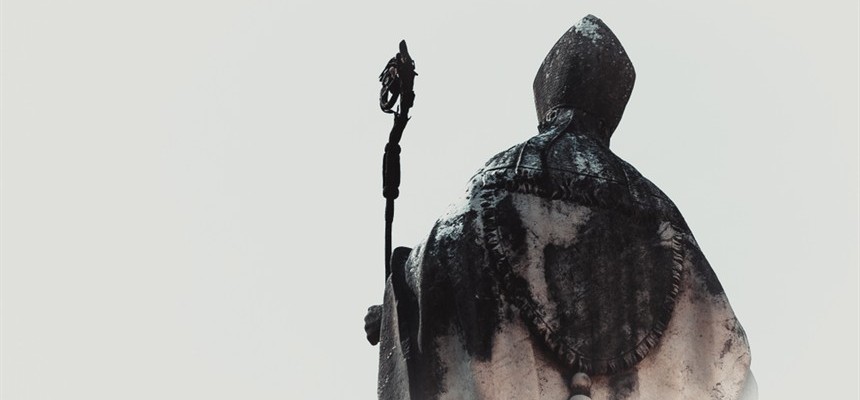
Pope Leo VIII is seen as both an antipope and a pope. Let me explain….
Born in Rome, around 915, Leo was the son of a well-known noble family. His father was the protonotary, or the palace notary for the papal chancery, a layman. Leo followed in his father’s footsteps. During his forties, Leo rose to be the superintendent of the Roman public schools for scribes. He was described as venerable, energetic and honorable.
He attracted the attention of the boy pope, John XII in 963, when Pope John and Emperor Otto, of the Holy Roman Empire, began having differences. Leo was given the assignment of being an envoy to the newly crowned Otto as he besieged the deposed king, Benegar of Italy. Leo and the other envoys travelled north to deliver two messages. The first was that Pope John promised to correct the abuses that Otto had noticed at the papal court. The second was a protest against Otto’s actions demanding that cities in the papal states take an oath of fidelity to Otto rather than to the pope. After consultations, the emperor decided that he had had enough of Pope John.
Late in 963, Otto entered Rome to deal with John. He arranged a hasty synod and uncanonically deposed the pope. Then he proceeded to have Leo uncanonically elected on 4 December, 963. The only problem was that Leo was a layman and did not qualify to be a bishop. So, to correct that detail, Otto had Sico, the cardinal-bishop of Ostia ordain Leo as ostiarius, lector, acolyte, subdeacon, deacon and priest all in one day. Then, Leo was made bishop on 6 December so he could be a legal pope.
Although Pope John had gone away, he was not forgotten. And neither was his money. He bribed Roman nobility to rise up to overthrow Otto and kill Leo. Soon after Christmas, there was an uprising. But it was put down by Otto’s troops. Leo tried to appease the nobility. He persuaded Otto to release the hostages who had been taken from their families in exchange for good behavior. Otto did. And then he left around 12 January. To no one’s surprise, the rebellion rekindled, forcing Leo to flee the city, joining Otto in February.
While Leo was out of town, ex-Pope John, who was again current Pope John, returned, sitting once again on the throne of Peter. He convened a synod, where he deposed and excommunicated Leo by late February. John was dead by the middle of May, however. At this point, the Roman nobility and clerics elected Benedict V.
Emperor Otto, not at all happy with this turn of events, returned to Rome, with Leo in tow. Once again, Otto laid siege to the city. The Romans surrendered and Leo was reinstalled as pope.
Within days, Benedict, in full papal regalia, and his followers, were brought before Pope Leo. After some serious brow beating, Benedict admitted his guilt in letting himself be elected while Pope Leo was still alive. Benedict’s consecration was revoked and he was reduced to a deacon. The nobility was obligated to swear fealty to Leo. Satisfied, Otto left the city in June.
For the remainder of his papacy, Leo issued various bulls. However, there seem to have been so many that showed up that investigations claim that no one can determine their original form.
Leo died around 1 March 965, approximately 50 years old. The time between the deposition of Benedict and Leo’s death is seen as a valid papacy. The time between his election in 963 and Benedict’s deposition in 964 is seen as an invalid papacy, or antipapacy.

Recent Comments